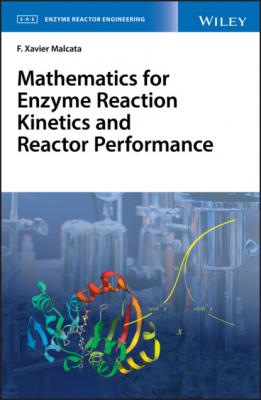Mathematics for Enzyme Reaction Kinetics and Reactor Performance. F. Xavier Malcata
Читать онлайн.| Название | Mathematics for Enzyme Reaction Kinetics and Reactor Performance |
|---|---|
| Автор произведения | F. Xavier Malcata |
| Жанр | Химия |
| Серия | |
| Издательство | Химия |
| Год выпуска | 0 |
| isbn | 9781119490333 |
The next stage of informational content is vectors – each defined by a triplet (a,b,c), where c also denotes a real number; each one is represented by a point in a volume domain and is often denoted via a bold, lowercase letter (e.g. v). Their usual graphical representation is a straight, arrowed segment linking the origin of a Cartesian system of coordinates to said point – where length (equal to
Matrices are particularly useful in that they permit algebraic operations (and the like) be performed once on a set of numbers simultaneously – thus dramatically contributing to bookkeeping, besides their help to structure mathematical reasoning. In specific situations, it is useful to design higher order number structures, such as arrays of (or block) matrices; for instance,
One of the most powerful applications of matrices is in solving sets of linear algebraic equations, say,
and
in its simplest version – where a1,1, a1,2, a2,1, a2,2, b1, and b2 denote real numbers, and x1 and x2 denote variables; if a1,1 ≠ 0 and a1,1 a2,2 − a1,2 a2,1 ≠ 0, then one may start by isolating x1 in Eq. (1.1) as
and then replace it in Eq. (1.2) to obtain
After factoring x2 out, Eq. (1.4) becomes
(1.5)
so isolation of x2 eventually gives
– which yields a solution only when a1,1 a2,2 − a1,2 a2,1 ≠ 0; insertion of Eq. (1.6) back in Eq. (1.3) yields
thus justifying why a solution for x1 requires a1,1 ≠ 0, besides a1,1 a2,2 − a1,2 a2,1 ≠ 0 (as enforced from the very beginning). Equation (1.6) may be rewritten as
(1.8)
– provided that one defines
complemented with
the left‐hand sides of Eqs. (1.9) and (1.10) are termed (second‐order) determinants. If both sides of Eq. (1.2) were multiplied by −a1,2/a2,2, one would get
